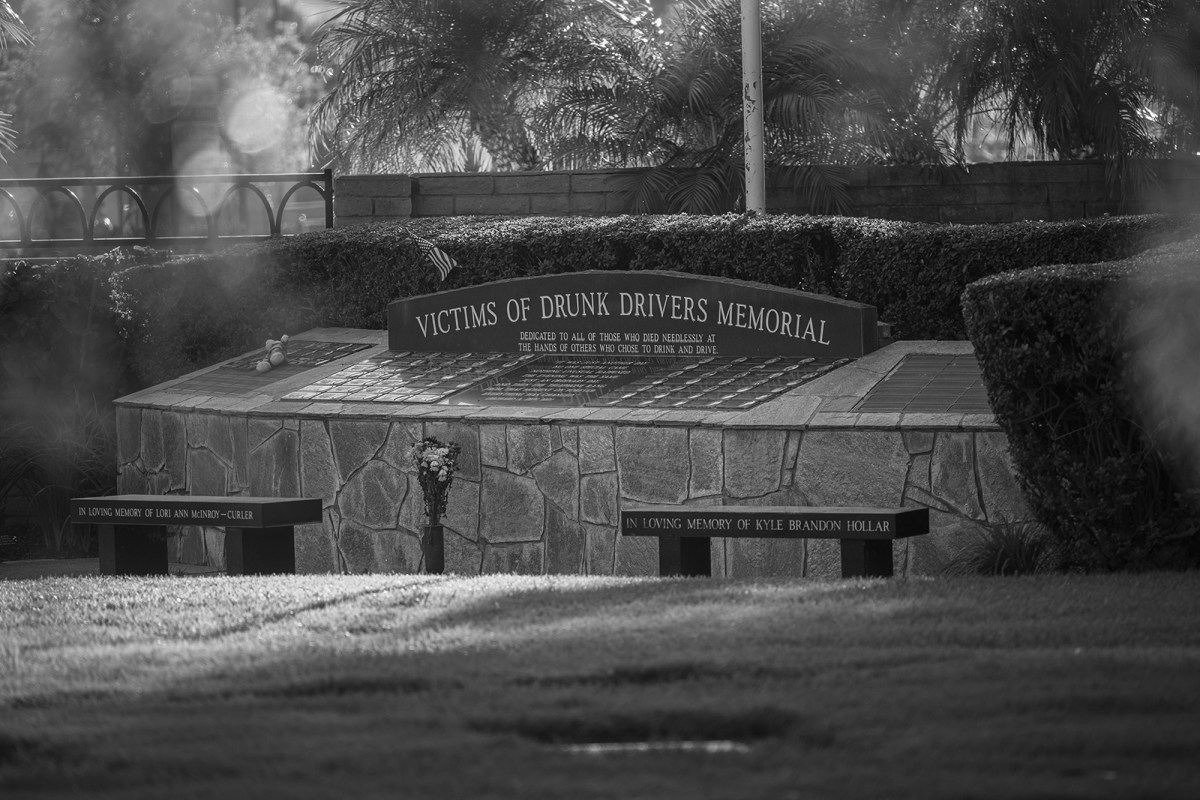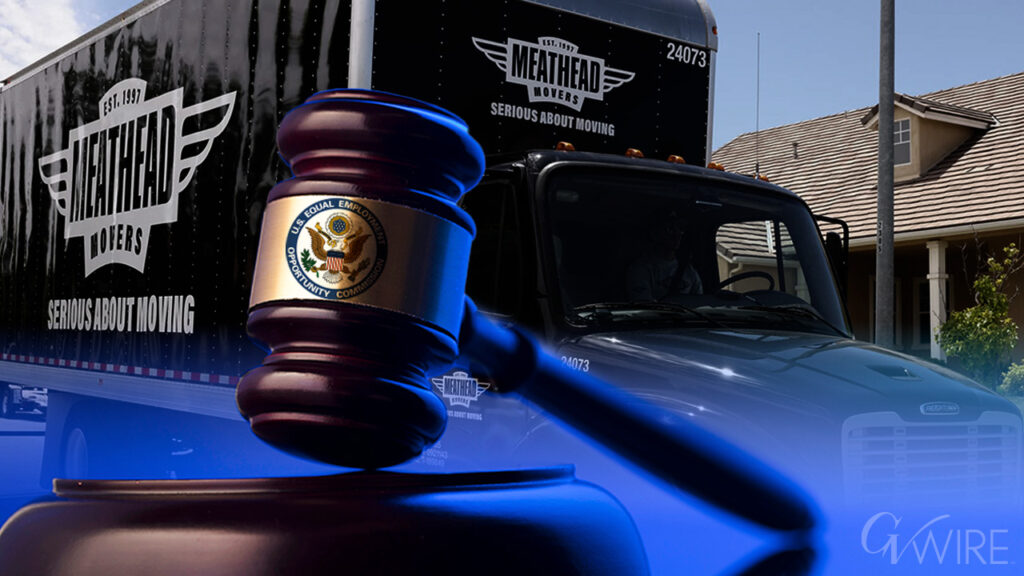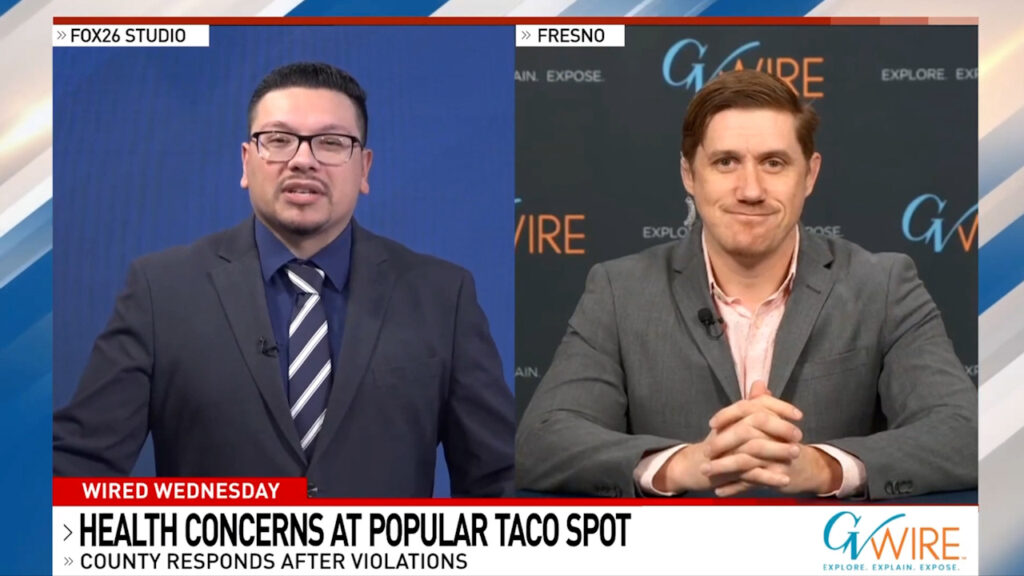The Victims of Drunk Drivers Memorial at Pacific View Mortuary and Memorial Park in Corona del Mar, on Sept. 24, 2025. (CalMatters/Jules Hotz)

- Countless California families have lost loved ones to drunk drivers. Why are judges and lawmakers ignoring the problem?
- Melanie Sandoval was a teenager in 1989 when she was convicted in Madera County for driving drunk. In 2023, she pleaded no contest to her 16th DUI.
- Last fall, lawmakers gutted a bill that would have required anyone convicted of a DUI to use an in-car breathalyzer.
Share
|
Getting your Trinity Audio player ready...
|
This story was originally published by CalMatters. Sign up for their newsletters.
Masako Saenz didn’t just lose her 5-year-old son to a repeat drunk driver. Two decades later, the Sacramento mother lost her own life after being hit by a driver with a blood alcohol level twice the legal limit.
Her story is one of thousands that illustrate a stark — and deadly — reversal in how the state handles DUIs.
California was the birthplace of the modern movement against drunk driving in the 1980s. But over the past decade, alcohol-related roadway deaths have shot up by more than 50% — an increase more than twice as steep as the rest of the country, federal estimates show.
To understand why so many people are once again dying in fatal DUI crashes, we reviewed vehicular manslaughter and homicide cases filed all around California from 2019 through early 2024. We also examined other states’ laws on intoxicated driving and sifted through decades of state and federal traffic safety data.
The records reveal a state that too often fails to differentiate between drivers who made a dangerous mistake but learn from it and those who refuse to stop endangering lives. Drunk and drugged driving is now so common in car-centric California that drivers routinely rack up four, five, six DUIs. One woman in Fresno just got her 16th.
Here are the key takeaways from our investigation:
1. California has some of the weakest DUI laws in the country, allowing repeat drunk and drugged drivers to stay on the road with little punishment.
Here, drivers generally can’t be charged with a felony until their fourth DUI within 10 years, unless they injure someone. In some states, a second DUI can be a felony.
Missed opportunities to prevent tragedies haunt the loved ones of the dead. The driver who killed Sarah Villar while she was out walking with her fiance in 2021 had already been convicted of driving drunk in 2018, 2019 and 2020 — all misdemeanors — and served just a couple weeks behind bars before the fatal crash.
Villar’s parents buried her in her wedding dress.
“To the broken justice system that allowed this to happen — shame on you,” her father, Dave Villar, said in her eulogy. “If I walked out my front door today onto my porch and fired a shot into my neighborhood every day until I killed someone, when would I be a menace to society? When do I become a danger to my community? I say it’s after the first shot. Our system says it’s after the last.”
2. The state gives repeat drunk drivers their licenses back faster than other states.
In California, you typically lose your license for three years after your third DUI. That’s compared to eight years in New Jersey, 15 years in Nebraska and a permanent revocation in Connecticut.
We found drivers with as many as six DUIs who were able to get a license in California.
3. Even when the state does take their license, many drivers stay on the road for years — racking up more tickets or new DUIs — with few consequences until they eventually kill.
One of the best ways to avoid punishment appears to be simply skipping court.
Sylvester Conway was arrested three times in Fresno County from 2019 through 2021 for driving drunk but failed to show up to court. All three cases were open with outstanding warrants when prosecutors said he drove drunk again in early 2022, flipped his car and killed his passenger.
4. Courts and lawmakers don’t treat DUI deaths as violent crimes.
Drunk vehicular manslaughter isn’t considered a “violent felony.” But in a twist of state law, a DUI that causes “great bodily injury” is — meaning that a drunk driver who breaks someone’s leg can face more time behind bars than if they’d killed them, prosecutors said.
The discrepancy came as a shock to Ryan Nazaroff, who decided to become a law enforcement officer after his younger brother died in a DUI-related crash as a teenager. Years later, it happened again — his father was killed by a repeat drunk driver in 2022.
He learned that the driver who killed his dad will likely serve only a small fraction of her 10-year sentence in prison. In general, someone convicted of a violent felony will serve two-thirds of their sentence behind bars; for a lesser felony it’s as little as a third, prosecutors said.
5. California has fallen behind on a simple solution embraced by many other states: in-car breathalyzers.
Ignition interlock devices, known as IIDs, are those in-car breathalyzers that a driver needs to blow into for the vehicle to start. In California, the devices prevented more than 30,500 attempts to drive under the influence in 2023 alone, state legislative reports say.
But unlike most states, California doesn’t require first-time drunk drivers to use the devices. MADD gave us an “F” on a 2022 national report card of states’ ignition interlock laws.
State law does require the devices for repeat offenders — but records suggest even that isn’t being enforced. Judges in more than a dozen counties ordered the breathalyzers for less than 10% of drivers convicted of a second DUI, according to a 2023 DMV report.
“They should be ashamed of themselves, because how many deaths have they caused?” said retired state Sen. Jerry Hill, a Bay Area Democrat who wrote the existing law. “It’s an abuse of authority and power.”
6. Despite the mounting death toll, state leaders have shown little willingness to address the issue.
In his time trying to address drunk driving in the Legislature, Hill grew dismayed by what he deemed a “soft approach” to DUIs, where legislators and committee consultants worry more about inconveniencing drivers than preventing deaths.
Just this fall, California lawmakers gutted the latest of several bills that would have required anyone convicted of a DUI to use an in-car breathalyzer. The state’s Department of Motor Vehicles said it didn’t have the time or resources to carry it out.
State data underscores the threat: Drivers with prior DUIs are involved in a majority of fatal and injury DUI crashes in California.
Melanie Sandoval was still a teenager in 1989 when she was convicted in Madera County for driving drunk. She got her second DUI a couple years later, and the state took her license.
She got her third a few years after that. And then her fourth, fifth, sixth, seventh, eighth, ninth, 10th, 11th, 12th, 13th, 14th and 15th.
In 2023, she pleaded no contest to her 16th DUI after she crashed into the car of a retired naval aviator named Kevin Bohnstedt. He recognizes the government can only do so much to stop people from making bad decisions, but Bohnstedt said he was floored that the court tried to let her off with mere probation.
“The biggest concern I have is the next time that it happens, there could be kids in the car. And she could kill them,” he said. “Or she could run people down. Any number of different horrific things could happen. And it could lead to somebody dying.”
If that happens, he said the state — lawmakers, law enforcement, the courts — will have blood on its hands.
“You have an opportunity to stop this,” Bohnstedt said.
Court research by Robert Lewis, Lauren Hepler, Anat Rubin, Sergio Olmos, Cayla Mihalovich, Ese Olumhense, Ko Bragg, Andrew Donohue and Jenna Peterson
This article was originally published on CalMatters and was republished under the Creative Commons Attribution-NonCommercial-NoDerivatives license.
RELATED TOPICS:
Categories

Bowing to Congress, Justice Department Releases More Epstein Records




















